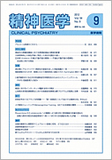Japanese
English
- 有料閲覧
- Abstract 文献概要
- 1ページ目 Look Inside
- 参考文献 Reference
- サイト内被引用 Cited by
抄録
長崎市の原子爆弾被爆者を対象に,被爆という心的外傷が58年後にいかなる影響を及ぼしているのかについて分析した。対象者は14,597人である。評価尺度は被爆体験によるPTSD症状を測定するIES-Rと調査時点の精神的健康度を測定するGHQ-12である。全対象者のIES-R高得点者率は31.9%であった。爆心地からの距離別にみると,爆心地に近い場所での被爆者はIES-R高得点者率が有意に高かった。IES-R高得点者群はGHQ-12高得点者率が有意に高かった。被爆体験とともに被爆後の生活上のストレスの加重が関係していると推測された。IES-R高得点者群は調査時点で個人的に感じ取っている罹患疾患数が有意に多く,対象者が被爆と関係があると判断している罹患疾患数も有意に多かった。被爆者の永続的な身体的健康不安が示唆された。
In the present study, we analyzed the effects of the trauma caused by exposure to the atomic bomb on the mental health of the survivors in Nagasaki city 58 years after the incident. A total of 14,597 survivors were assessed with GHQ-12 scale, which evaluates mental health, and the IES-R scale, which evaluates the clinical symptoms of posttraumatic stress disorder (PTSD). Subjects were asked to indicate any illnesses they had and whether they thought their illnesses were related to exposure to the atomic bomb. In total, of 31.9% of the subjects had high IES-R scores. We found a significant relationship between distance from the hypocenter at the time of exposure and IES-R score;IES-R scores increased with increasing proximity to the hypocenter. Subjects with high IES-R scores also tended to have high GHQ-12 scores compared to subjects with low IES-R scores. In addition, GHQ-12 scores increased significantly with age, indicating that the trauma of being exposed to the atomic bomb and the subsequent stresses of daily life may accumulate over time. Compared to the low IES-R score group, the high IES-R score group had a significantly greater number of illnesses and a significantly greater number of illnesses that they judged to be related to exposure. These findings confirm that atomic bomb survivors have persistent concerns regarding their physical health.

Copyright © 2012, Igaku-Shoin Ltd. All rights reserved.


